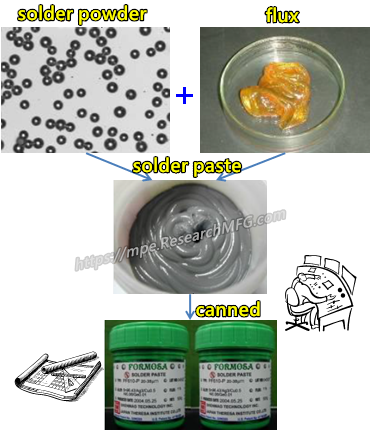
The alloy composition of lead-free LTS (Low Temperature Solder) usually includes the metal “bismuth (Bi)” in addition to tin (Sn) to lower its eutectic point.
The commonly used lead-free solder SAC305 has a melting point of 217°C, while Sn64Bi35Ag1 has a melting point of only 178°C, and Sn42Bi58 has an even lower melting point of 138°C. This means that the melting temperature of solder containing “bismuth (Bi)” is significantly lower, ranging from 39°C to 79°C lower than SAC305 lead-free solder.
Advantages of Low-Temperature Solder (LTS): Compatibility with Material Characteristics
The most significant advantage of low-temperature solder (LTS) is its ability to address the technical challenge of inadequate temperature resistance in soldering materials. It also offers cost savings since reflow oven temperatures don’t need to be set too high for soldering. This aligns with the current corporate culture emphasizing environmental friendliness. LTS is commonly used for soldering applications in FPC or LED strips.
For example, in a previous scenario, my company encountered a request from RD to use a three-layer FPC for HotBar soldering. The FPC could only have solder pads on one side (pad) without through-hole vias. In such a case, the heat from the HotBar’s thermodes couldn’t directly reach the solder pads on the FPC or PCB through direct contact or via through-holes to effectively conduct heat for solder melting. The heat from the thermodes had to pass through the three layers of the FPC to reach the solder surface. The significant accumulation of heat energy was a concern, fearing that excessive heat or prolonged heating might cause FPC scorching. More importantly, there was a worry about potential quality and reliability issues in the future. Consequently, we switched to “lead-free low-temperature solder” to address the FPC scorching issue.
Related Reading: Feasibility Assessment of HotBar Soldering using Low-Temperature Solder
Disadvantages of Low-Temperature Solder (LTS): Lower Solder Strength
However, the drawbacks of low-temperature solder (LTS) are evident. Its solder strength is lower compared to SAC and leaded solder, making solder joints more prone to fracture due to external stress. Therefore, manual de-paneling after PCBA soldering should be avoided, especially de-panel by manual. Additionally, rapid cooling after reflow is not recommended, as it may lead to solder joint embrittlement.
Moreover, since low-temperature solder is not yet mainstream in the market, challenges like lead time, inventory management, and avoiding line mix-ups need to be overcome.
Ag (silver) is the sole difference between SnBi and SnBiAg
As for the distinction between SnBi and SnBiAg, it lies in Ag (silver) element. Generally, the addition of “silver” to solder paste is aimed at improving wettability, enhancing solder joint strength, and increasing fatigue resistance, making it advantageous for products to pass temperature cycling tests.
However, if the silver content is too high in solder, it can actually increase brittleness. Therefore, in commonly used solder pastes, it is not recommended for the silver content to exceed 3%.
Related Posts:








Leave a Reply